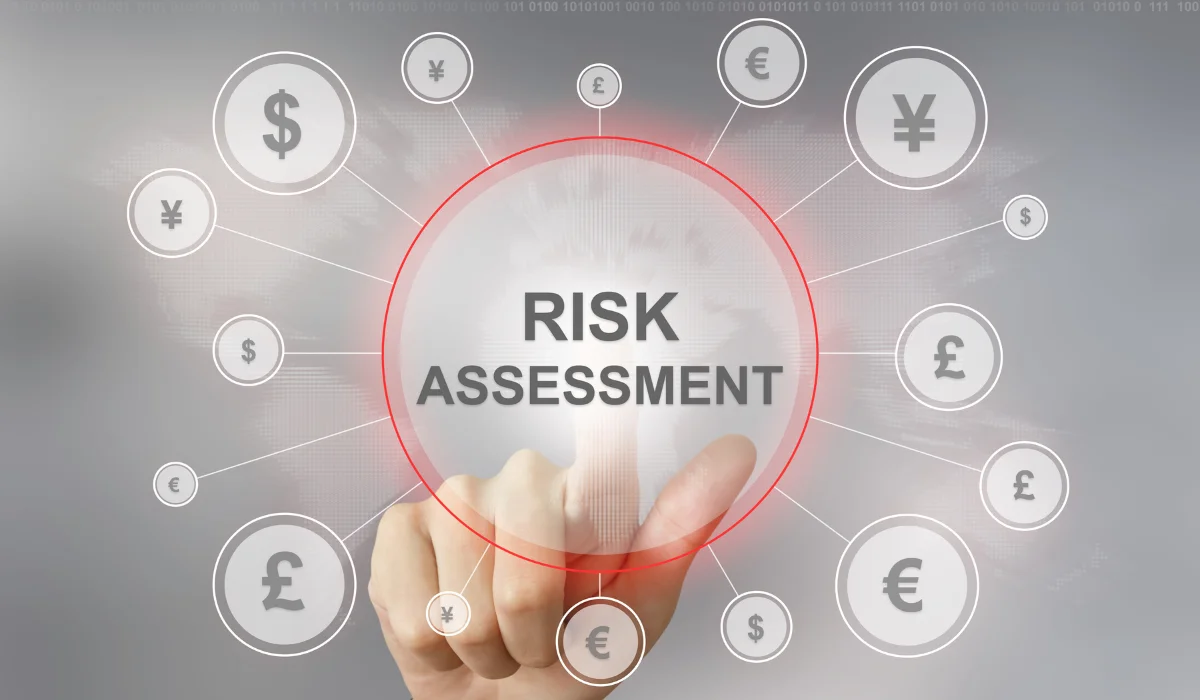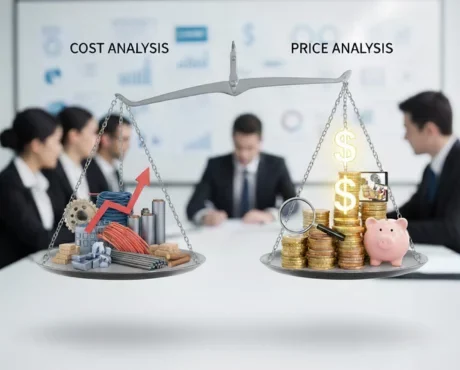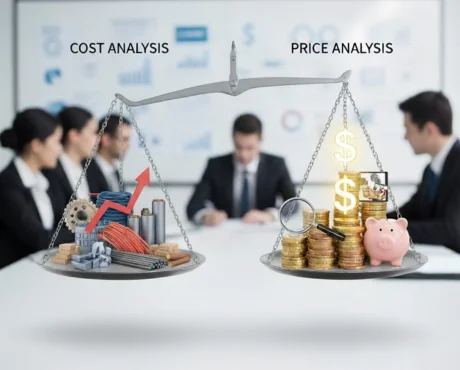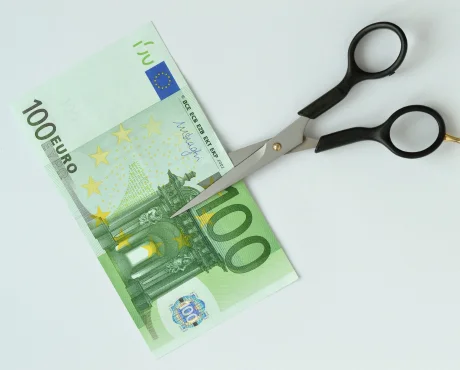Table of Contents
- Cost Analysis vs. Price Analysis: What’s the Difference?
- Why Cost and Price Analysis Matter in Procurement
- Key Elements of Effective Cost and Price Analysis
- Common Mistakes in Cost and Price Analysis
- Bringing Cost and Price Analysis into Your Procurement Culture
- Final Thoughts
- Frequently Asked Questions
The price tag is a common trap in procurement, where it is often presented as the sole benchmark of value. But anyone who has spent enough time in sourcing knows that the lowest price doesn’t always mean the lowest cost or the best deal. That’s where cost and price analysis come in. These aren’t just for compliance or audits; they are strategic practices that can save organizations substantial money, improve supplier relationships, and reduce risk.
Whether you’re new to procurement or have been doing this for years, it’s worth revisiting why cost and price analysis in procurement is important and how to do it well.
Cost Analysis vs. Price Analysis: What’s the Difference?

Before diving deeper, it’s important to clarify the difference between price analysis and cost analysis. They often get used interchangeably, but they serve different purposes.
Price Analysis
Price analysis is a straightforward comparison of prices across vendors, similar or identical items, or market benchmarks. It looks at the final price offered and asks: Is this price reasonable compared to alternatives? Use it when:
- There is adequate competition.
- You’re buying commercial items.
- Cost breakdowns are not available or not required.
Example: If Vendor A is offering laptops for $900 each, and three others are quoting $920, $950, and $970 for the same model, you can analyze the price variance and judge whether the $900 offer is reasonable.
Cost Analysis
Cost analysis digs deeper. It involves evaluating the individual cost elements that make up a supplier’s price, such as materials, labor, overhead, and profit margins. This is particularly important when:
- The supplier is a sole source.
- There’s limited competition.
- The price seems unusually high or low.
- You’re negotiating a non-commercial, custom, or complex contract.
Example: If a supplier quotes $1.2 million for a custom software build, a cost analysis would examine how much of that is development labor, licenses, management overhead, and profit margin.
Why Cost and Price Analysis Matter in Procurement

1. Avoiding Overpayment
The most obvious reason to perform cost and price analysis in procurement is to avoid overpaying. In competitive markets, prices can vary significantly for the same or similar goods and services. But even in sole-source or specialized procurement, knowing the cost drivers helps prevent being taken advantage of.
2. Justifying Your Decisions
Procurement is often under scrutiny from finance teams, auditors, or regulatory bodies. A clear price or cost analysis provides a defensible record showing that you’ve made a reasonable, fact-based decision. This is particularly crucial in public sector procurement or when dealing with grant-funded purchases.
3. Identifying Cost Reduction Opportunities
Breaking down supplier pricing through cost analysis can uncover opportunities to reduce costs:
- Are material markups excessive?
- Is there duplication in overhead costs?
- Is the quoted labor rate aligned with market rates?
These insights can become negotiation levers or internal action items for sourcing alternative suppliers or materials.
4. Strengthening Supplier Negotiations
When you walk into a negotiation with clear visibility into pricing structures and cost drivers, the conversation shifts from guesswork to strategy. You can challenge specific pricing elements, offer market comparisons, or explore alternative configurations that reduce total cost without compromising quality or delivery.
It turns a vendor conversation from “That’s too expensive” to “Let’s look at the labor hours and overhead – can we trim this back?”
5. Improving Supplier Performance and Relationships
This one often gets overlooked. When suppliers know that your organization conducts proper cost and price analysis, they’re more likely to:
- Submit realistic proposals.
- Be transparent about their cost structure.
- Focus on value, not just price.
Key Elements of Effective Cost and Price Analysis
Doing both the analysis right takes more than glancing at a spreadsheet. Here are the main components that define the best procurement analysis practices:

1. Market Research
Before analyzing prices or costs, you need market context. Research current market rates, recent procurement deals, supply/demand dynamics, and commodity prices. Without this context, you can’t accurately judge what’s reasonable.
Tip: Use benchmarking tools, third-party pricing databases, and industry reports. Reach out to peers in your industry. Real-world insights from others in the field can often reveal pricing trends or supplier red flags that aren’t obvious in formal data.
- Cost Breakdown Request
If you’re doing a cost analysis, request a detailed cost breakdown from the supplier. This typically includes:
- Direct material costs
- Direct labor costs (with rates and hours)
- Manufacturing or overhead costs
- General and administrative expenses
- Profit margin
While some vendors may hesitate, this is standard in many sectors, especially in government and project-based procurement.
3. Historical Pricing Comparison
Use past purchase data to compare prices for similar goods or services. Consider inflation and market changes, volume differences, delivery timelines, and scope changes. Don’t assume a price increase is justified just because it’s “been a few years.”
4. Total Cost of Ownership (TCO)
Both cost and price analysis should factor in TCO, the full lifecycle cost of the product or service, not just the purchase price. This includes maintenance and support, licensing or renewal fees, consumables, and disposal or decommissioning costs. Two offers with the same upfront price can have very different total costs over five years.
5. Risk and Value Assessment
A lower price doesn’t always mean better value. Therefore, you must evaluate a supplier’s reliability and delivery track record, warranty or service agreements, support responsiveness, scalability, and future-proofing capabilities. Spending a bit more upfront can be the smarter move if it means fewer disruptions, better support, or stronger guarantees in the long run.
Common Mistakes in Cost and Price Analysis
Even the experts fall into these traps.
- Assuming the lowest price is the best value, not accounting for hidden costs or long-term risks.
- Relying solely on past prices, ignoring market changes or advancements in technology that should drive prices down.
- Skipping cost analysis in sole-source deals and accepting quoted prices without scrutiny when competition is limited.
- Failing to document the rationale while making decisions that can’t be explained or defended later.
- Not involving internal stakeholders such as engineers, operations, or the finance team can impact cost-effectiveness.
Avoiding these mistakes during the cost analysis requires a mix of due diligence, collaboration, and curiosity.
Bringing Cost and Price Analysis into Your Procurement Culture

Building a procurement function that consistently applies cost and price analysis takes effort. Here are a few strategies to ease that effort:
1. Build Analytical Skills
Train your team on financial analysis, cost modeling, and TCO methodologies. This can be done through workshops, certifications (e.g., CIPS, CPSM), or peer mentoring.
2. Standardize Your Process
Develop templates and guidelines for cost/price analysis. Define when each type is required, what documentation is necessary, and how approvals are processed.
3. Integrate Technology
Use procurement software that includes cost analysis tools, supplier comparisons, and historical pricing data. Spreadsheets are good, but digital platforms make analysis faster and more consistent.
4. Collaborate with Finance and Engineering
Involve finance teams in analyzing cost structures and validating assumptions. Engineering or operations teams can assess technical feasibility and hidden cost drivers.
5. Treat It as a Continuous Process
Don’t just analyze once during the sourcing event. Revisit cost structures over time, especially in long-term contracts. Markets change. So should your analysis.
Final Thoughts
Cost and price analysis in procurement aren’t just check-the-box activities for procurement. They’re critical tools that lead to smarter sourcing, better supplier relationships, and long-term savings.
In an era where procurement is expected to deliver strategic value, the ability to distinguish between price and true cost is what separates transactional purchasing from professional procurement.
If your organization isn’t doing this consistently, now is the time to start. Not because you’re required to, but because it’s just good business.
Frequently Asked Questions
1. When should I use price analysis instead of cost analysis?
Use price analysis when you’re purchasing standard or commercial goods and have multiple quotes to compare. It works best when the product or service is well-defined, competitive, and the pricing is straightforward. Use cost analysis when pricing lacks transparency, such as custom projects, sole-source contracts, or when the quote seems out of line with market expectations.
2. What is cost analysis in procurement?
Cost analysis is the process of examining the individual cost elements that make up a supplier’s quoted price, such as labor, materials, overhead, and profit, to determine whether the price is fair and reasonable. Unlike price analysis, which compares total prices, cost analysis digs into why something costs what it does. It’s especially important for complex or non-standard purchases, and when price transparency is limited.
3. What’s the risk of not doing a proper analysis?
Failing to conduct proper cost or price analysis can result in overpayment, supplier underperformance, and a lack of accountability. It also weakens your ability to negotiate effectively and leaves procurement decisions open to audit findings, compliance issues, or internal scrutiny, especially on large or high-visibility purchases.
4. Can software tools help with cost and price analysis?
Definitely, specialized tools can simplify and strengthen your analysis. For example, Cost It Right is one such platform designed to help procurement teams break down supplier quotes, benchmark pricing data, and model “should-cost” scenarios. Tools like this reduce manual effort, improve accuracy, and allow teams to focus more on strategy than spreadsheets.





